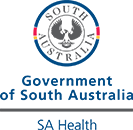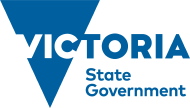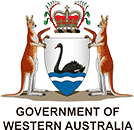Neck pain
If you or someone near you has neck pain and chest pain call triple zero (000) and ask for an ambulance.
Key facts
- Neck pain is a common condition that usually clears up in a few days.
- If you have neck pain, you may have other symptoms like headache.
- Medicines and other treatments like physiotherapy can be used to treat neck pain.
- There are other ways you can treat neck pain at home.
- If you have severe neck pain or pain that doesn’t go away, speak to your doctor.
What is neck pain?
Neck pain is a common condition that can be caused by many different things. It will affect most people at some point in your life.
Most neck pain clears up by itself in a few days. It’s very rarely a sign of something more serious.
What symptoms are related to neck pain?
Neck pain often causes tightness and pain in your:
- neck
- shoulders
Neck pain can also cause:
- headaches
- difficulty in moving your head
Your pain may get worse when you hold your head in one position for a long time, such as at a computer.
CHECK YOUR SYMPTOMS — Use the Symptom Checker and find out if you need to seek medical help.
What causes neck pain?
Common causes of neck pain are:
- poor posture (the way your body is positioned when standing or sitting)
- sleeping with too many pillows
- prolonged use of a computer
- tension in your muscles
- injury such as a muscle strain
- wear and tear in the bones of your neck (cervical spondylosis)
- infection
Less common causes of neck pain are:
- damage to the vertebrae, spinal cord or nerves in your neck
- arthritis
- a slipped disc (herniated disc)
- a compressed nerve (cervical radiculopathy)
- tumours or cancer
- meningitis
When should I see my doctor?
If you or someone near you has neck pain and chest pain call triple zero (000) and ask for an ambulance.
You should see a doctor if your pain:
- is severe
- is getting worse
- doesn’t ease up in a week or so
- is causing you distress
- is affecting your daily life
You should also see your doctor if your neck pain is accompanied by other symptoms like:
- fever, sweats or chills
- changes to your vision or hearing
- pins and needles or numbness
- numbness or weakness in your arms or legs
- feel light-headed, dizzy, or unbalanced
- struggling to concentrate
- bowel or bladder problems
ASK YOUR DOCTOR — Preparing for an appointment? Use the Question Builder for general tips on what to ask your GP or specialist.
FIND A HEALTH SERVICE — The Service Finder can help you find doctors, pharmacies, hospitals and other health services.
How is the cause of neck pain diagnosed?
Your doctor will examine you and ask you about your pain. To diagnose a specific cause of your neck pain, they may arrange tests such as:
However, imaging is not needed for most people with neck pain.
How is neck pain treated?
If you have neck pain, the best things to do are to:
- keep gently moving your neck as much as possible
- adapt any activities that might be causing you pain
Your doctor or physiotherapist can give you simple set of exercises to help with neck pain.
Self-care at home
There are ways you can manage your neck pain yourself.
Using soft pillows or too many pillows can stretch your neck muscles. To avoid this, use a single pillow that is:
- comfortable
- supportive
- firm
Heat packs or ice packs may also be used to relieve neck stiffness and pain.
It’s also important to ensure your home and work environments are adjusted to your needs. You can:
- use a footstool to ensure your hips and knees are level
- adjust the height of your computer screen to avoid stretching your neck
- hold reading materials at eye level to avoid hunching over
- practice good posture while watching television
If you cannot fully move your neck left and right, your doctor may advise you not to drive until you have regained full neck movement.
If you can drive safely, adjust your headrest and seat so that your posture is properly supported.
If your neck pain lasts for a few days, you should also avoid tasks involving:
- lifting
- pulling
- punching
- repetitive bending and twisting
These activities can make your neck pain worse. Try not to overdo it.
Neck supports (braces and collars) are not considered useful for neck pain. These should only be used if your healthcare professional has advised you to wear one.
Medicines for neck pain
You can ask your doctor or pharmacist to recommend over-the-counter pain relief medicines.
They may suggest:
- paracetamol
- anti-inflammatory medicines, including analgesic creams or gels.
Long-term neck pain is sometimes treated with steroid injections.
Other treatment options
Your doctor or physiotherapist can show you how to safely stretch your neck muscles. Physiotherapy can help reduce how long your neck pain lasts.
Massaging your neck can give short-term relief of neck pain.
Very rarely, surgery is used to treat neck pain.
Can neck pain be prevented?
It’s important to keep good posture, especially when you’re sitting, at work or driving. Try not to slouch or to poke your chin out.
A supportive pillow is also important to prevent neck pain.
Complications of neck pain
Sometimes neck pain doesn’t go away.
Chronic or persistent pain can continue even after the original problem has healed. There are different factors that may contribute to your pain, such as:
- emotional factors
- social factors
- environmental factors
A doctor can help you recognise and manage these factors. If your neck pain is chronic or persistent, speak to your doctor.
Resources and support
For more information about the causes and management of neck pain, you can visit these websites:
You can also call the healthdirect helpline on 1800 022 222 (known as NURSE-ON-CALL in Victoria). A registered nurse is available to speak with 24 hours a day, 7 days a week.
Learn more here about the development and quality assurance of healthdirect content.
Last reviewed: May 2024



-c25236.png)










